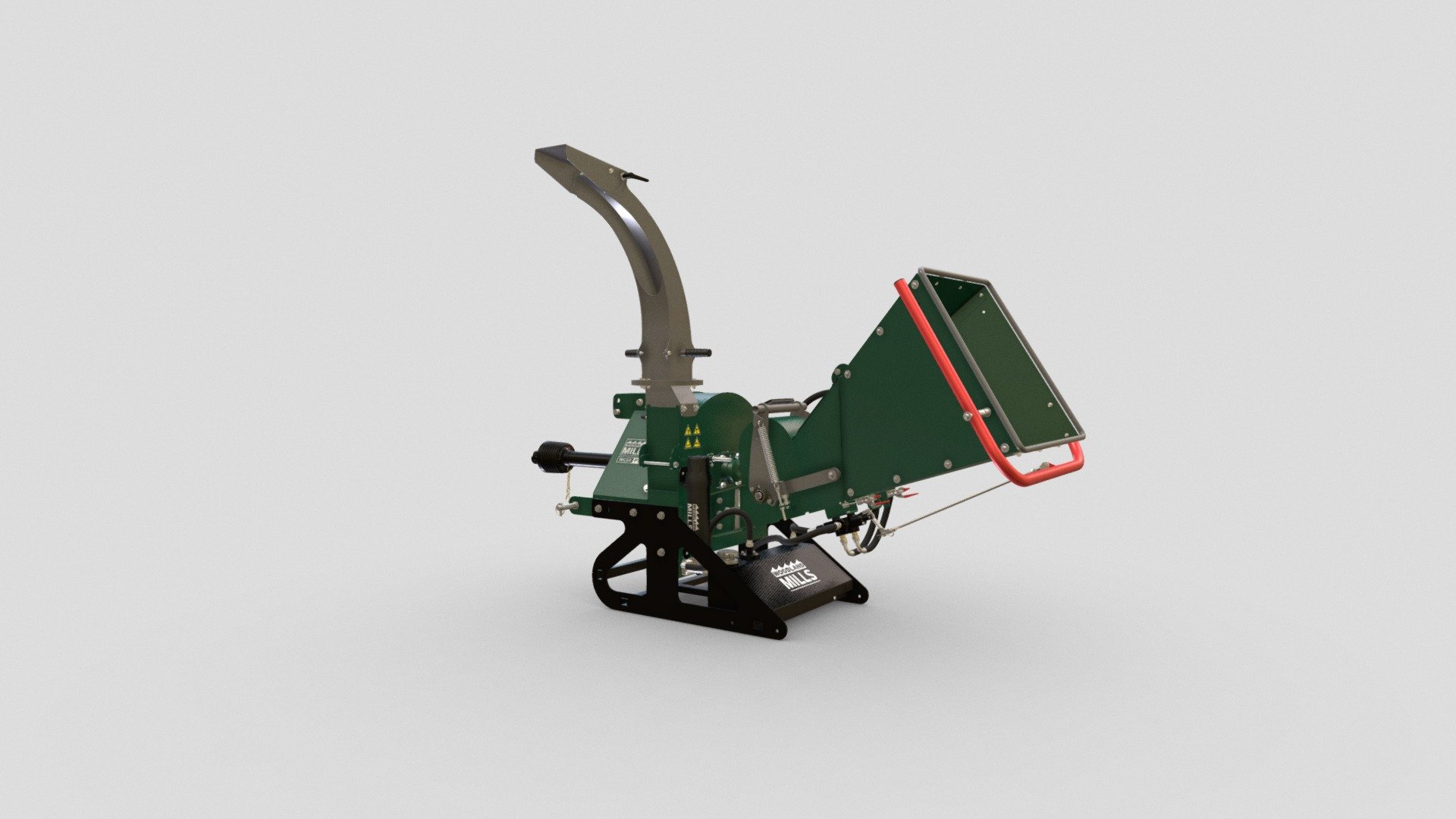Product Features
CAPACITY
The WC68 operates on tractors with 20 to 50 HP at the PTO. It has a large 23” x 27” (58 cm x 69 cm) infeed hopper opening that tapers down to a 6” x 8” (15 cm x 20 cm) opening where the 8" (20 cm) diameter roller grabs the branches and feeds them through the chipper. Branches as small as ¼” (6 mm) diameter and as large as 6” (15 cm) diameter can be fed through the WC68. To chip full 6” (15 cm) diameter logs at full infeed speed, a tractor with over 40 HP at the PTO is required.
HYDRAULIC INFEED SYSTEM
Branches are pulled into the WC68 with the 8" (20 cm) diameter infeed roller. The roller is hydraulically driven by the chipper's self-contained hydraulic system, and the hydraulic pump is belt driven from the main flywheel shaft. The infeed roller is adjustable in direction and speed, making it easy to feed branches of all shapes and sizes. The roller down pressure may be adjusted via two large springs, ensuring it grabs branches and easily pulls them in, eliminating the need for manual feeding.
FLYWHEEL
The dynamically balanced 24” (61 cm) diameter, 3/4” (2 cm) thick solid steel flywheel runs on a 2” (5 cm) diameter shaft, supported by 2 industrial and greaseable flanged bearings. It features four CNC-machined pockets to hold the reversible blades. The flywheel features four large fan blade paddles that spin at over 540 RPM.
FLYWHEEL LOCKING PIN
No more unsafe blade changes with the Woodland Mills flywheel locking pin. The WC68 features a flywheel locking pin that makes blade changes or flywheel maintenance convenient and safe. The pin simply fits into a series of holes that are positioned so every blade can be easily accessed while being changed or reversed.
REVERSIBLE CHIPPER BLADES
The WC68 chipper utilizes four high-quality hardened steel reversible chipper blades. These blades are 90 degrees apart, and can be reversed to take advantage of having two cutting edges on each blade. The blades are held onto the flywheel with four countersunk M10 bolts and locking nuts. Blades can be changed very quickly, thanks to the clamshell flywheel housing design. Simply undo one bolt and the upper flywheel housing rotates open, providing full access to the flywheel and chipper blades.
FOLDING INFEED CHUTE
The infeed chute on the WC68 wood chipper has a large 23” x 27” (58 cm x 69 cm) opening, making it easy to feed branches with multiple limbs effortlessly. The infeed chute can also be folded up to decrease the footprint of the chipper during transport or storage.
INFEED OPENING
The opening in the flywheel housing is 6” x 8” (15 cm x 20 cm), making it capable of accepting branches with several limbs. This reduces the need to trim branches down before feeding them into the chipper.
DISCHARGE CHUTE
The discharge chute was designed to rotate 360 degrees by simply rotating it with the two handles to the desired angle. This makes it possible to direct the wood chips in any direction, regardless of the location of the chipper. The end of the chute stands at 66” (1.7 m) off the ground, making it easy to direct the wood chips into the back of a truck or trailer. A rotating deflector is located at the end of the discharge chute, allowing further control of the location of the wood chips. Simply point it straight for maximum distance or angled down to deflect the chips directly down to the ground or into a trailer.
QUICK HITCH COMPATIBLE
The WC68 has a Category 1, 3-point hitch system that is designed to work with tractors rated at 20-50 PTO horsepower. It’s also quick hitch compatible, allowing for faster, easier hookups so you can get to work sooner.
PTO SHAFT INCLUDED
The PTO shaft, complete with shear pin, is included with the WC68 chipper.
ASSEMBLY
The WC68 chipper arrives in a steel crate and can be up and running in as little as one hour. The infeed chute and discharge chute are removed during shipping to eliminate the possibility of damage. The chipper will require 5 gallons (20L) of ISO 32 hydraulic oil in the tank, which is not included, but can be purchased at most farm or hardware stores. Lastly, attach the PTO shaft that comes included and trim it to length for your tractor, as per the manual if required.














